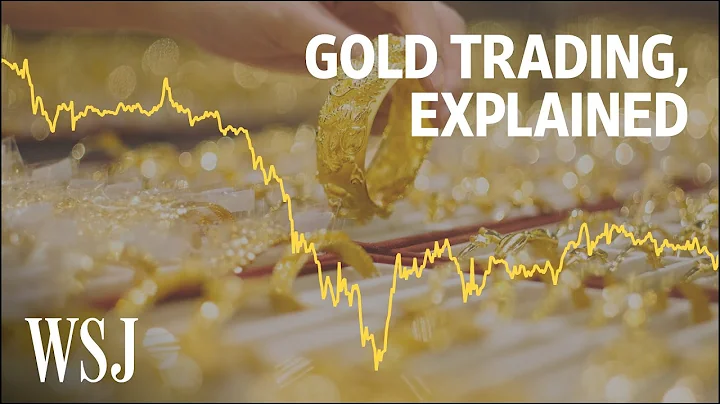

Author丨Tang Jing
Editor丨Zeng Fang
Picture source丨Tu Chong
On July 1, the international gold price once again fell below the important psychological mark of 1,800 US dollars, hitting a new low since May 16; international silver plummeted, falling below 20 within a day. The U.S. dollar has reached an integer mark for the first time since July 2020.
On the news, there are signs of cooling in U.S. inflation. The U.S. core PCE price index released at 20:30 on Thursday increased by 4.7% year-on-year, a new low since November last year, and increased by 0.3% month-on-month, lower than expected. The core PCE price index excludes volatile food and energy prices and is an important basis for the Federal Reserve to formulate monetary policy.
Is the fall in gold prices a temporary adjustment or a preparation for the next round of rise? Some experts pointed out to reporters that the current pricing logic of gold is a race between US nominal interest rates and inflation, but this rate difference is difficult to predict. An interview with
reporter found that there are two completely different views on the market regarding the trend of gold in the second half of the year: one is that the Federal Reserve's acceleration of interest rate hikes will suppress the trend of gold, and the other is that a recession in the United States is inevitable and gold will rise again.
Bullish: The U.S. economic recession is bullish for gold
The logic of the bulls is that the U.S. economy will inevitably slip from the stagflation period to the recession period, and gold is an excellent tool for hedging recession risks.
Xu Ying, a precious metals analyst at Topix Futures , said that the Federal Reserve’s aggressive interest rate hikes to suppress demand and fight inflation have increased the risk of a hard landing for the economy. This round of interest rate hikes is expected to last a short time; after the risk of economic recession was exposed, the market has become more optimistic about the Federal Reserve. Monetary policy is expected to undergo a fundamental reversal. The current U.S. bond yields are likely to have peaked, and the support for the U.S. dollar at the spread level has weakened. Gold will see the light of day after it withstands the pressure of the strong U.S. dollar and high interest rates. In addition, geopolitical risks still exist and the process of anti-globalization continues. Gold has the hedging properties of both real assets and credit currencies, making it more certain than other assets.
Xu Ying believes that the consequences of large-scale fiscal stimulus in the United States in the post-epidemic era cannot be completely solved by the Federal Reserve raising interest rates , and the gold price center is expected to move upward. It is expected that the bottom of London gold will be around US$1,800 per ounce, and the high will be as high as US$2,075 per ounce. It is recommended to have a bullish approach in terms of configuration. internal gold can still hedge against the risk of RMB depreciation, and the Shanghai gold operating range is 390-440 yuan/gram.
The well-known investment bank CICC also holds a similar view. CICC stated in the article "Outlook for Major Asset Allocations in the Second Half of 2022" that it recommends overweighting gold because gold can hedge against inflation and growth risks at the same time. Looking forward to , the main line of the market may switch from "stagflation trading" to "recession trading", but the timing of the switch is uncertain. Assets that may perform better in both environments should be added. From the perspective of logical deduction, the stagflation and recession environment is relatively unfavorable to stock assets, but relatively beneficial to gold. Commodity assets such as energy and bond assets behave completely oppositely in these two environments.
Bears: Real interest rates still have room to rise.
There are two main logics in the logic of shorts. One is that the high inflation that supports gold prices will eventually fall, and the other is that the current gold price has not fully factored in the Federal Reserve's expectations of aggressive interest rate hikes.
Galaxy Futures precious metal analyst Wan Yijing told 21 Century Economic Report reporter that the fluctuation of gold prices essentially depends more on the strength of the actual interest rate in the United States. It is slightly one-sided to judge the trend of gold prices only by factors such as interest rate hikes or recession. Only when real interest rates begin to weaken, or even turn from positive to negative, will precious metal prices strengthen significantly. The real interest rate can be seen as a game between nominal interest rates and inflation.
Wan Yijing pointed out that there are currently strong expectations for the Federal Reserve to raise interest rates, but precious metals have not fallen sharply because high inflation is supporting gold prices. A recession in the United States is inevitable in the future. If the easing cycle does not restart, the liquidity problems caused by the Federal Reserve's continuous interest rate hikes will drag down gold. Cash may then be the real darling of the market.
Wan Yijing believes that there is a high probability that U.S. inflation will fall back in the second half of the year. Regardless of whether the Fed's interest rate hikes accelerate or slow down, the support for gold prices will loosen, and the price of gold will continue to fall under the slightest pressure. Therefore, if the current fundamentals remain unchanged, gold is more likely to fluctuate downward. The internal price of gold also depends on the RMB exchange rate. A stronger US dollar will make the internal price of gold significantly stronger than the external price.
Nanhua Futures Metals Analyst Xia Yingying is also bearish on the trend of gold in the second half of the year, but she believes that high inflation will continue for some time. The main suppression of gold prices is the Federal Reserve's interest rate hike expectations . She predicts that in the second half of the year, with the marginal relief of market disruptions from the geopolitical situation, precious metals trading will revolve around expectations of Federal Reserve interest rate hikes under high inflationary pressure and the risk of stagflation and even recession. Amid expectations that U.S. inflation may continue to reach new highs in the third quarter, expectations for the Federal Reserve to raise interest rates may continue to increase slightly. The trend of precious metals in the third quarter is expected to be mainly under pressure, and the trend of silver is expected to be weaker than gold. But this may provide an ideal opportunity to build a position in the medium and long-term precious metals bull market. In the third quarter, U.S. gold is expected to operate in the 1700-1900 range, and U.S. silver is expected to operate in the 18-24 range.
Long-term bulls still have the upper hand
However, even analysts who are bearish on the trend of gold in the second half of the year maintain their bullish view on gold in the medium to long term.
Xia Yingying believes that even if gold experiences a correction in the second half of the year amid heightened expectations of the Federal Reserve raising interest rates, the room for correction will be limited. First, the Fed has limited room for further aggressive tightening of monetary policy. Secondly, although the increased expectations of interest rate hikes will have a short-term impact on precious metal prices, the magnitude and persistence of the negative effects should be viewed with caution. A typical example is that the Federal Reserve's interest rate hikes driven by high inflation since the second half of last year have not been essentially negative for gold.
Once again, the risk of U.S. economic recession in the third quarter is limited, and the fourth quarter may usher in a period of expected reversal of the Federal Reserve's monetary policy. Looking at the path to solving inflation in the United States, a fall in inflation is usually accompanied by an economic recession and an increase in the unemployment rate in the United States. If the U.S. economy falls into stagflation, precious metals may soon usher in a long bull; if the Federal Reserve is determined to fight inflation, precious metals will not be able to survive the U.S. economic recession alone, but interest rate cuts in the later stages of the recession will still be bullish for precious metals. In addition, the central bank gold purchase demand will provide new growth points for gold consumption. Finally, under the rebalancing of the world's geopolitical landscape, geopolitical risks still exist, which will bring potential benefits to precious metals.
analysts generally believe that investors who aim for medium and long-term asset allocation do not need to pay too much attention to the temporary correction of gold.
Luo Liang, precious metals analyst at CITIC Futures , told reporters that as the U.S. economy slows down, inflation and employment data will see a certain decline. In this context, the Federal Reserve's monetary policy is expected to tighten at first and then loosen, and the pressure on gold by interest rates will first strengthen and then weaken, and the price of gold will weaken at first and then strengthen. If a significant recession in the U.S. economy in the later period induces the Federal Reserve to stop raising interest rates, gold will strengthen significantly.
Founder mid-term futures precious metals analyst Shi Jialiang also believes that gold will fall first and then rise. He bluntly said that the short-term fall in gold prices caused by the tightening of the Federal Reserve's monetary policy and the easing of the geopolitical situation will not change the long-term bullish trend of gold. In the medium and long term, the accelerated tightening of the Federal Reserve's monetary policy will gradually be fully priced in, and the value of gold allocation to hedge against economic downturn, rising inflation, and black swan risks will still be high. Investors aiming for mid- to long-term asset allocation should consider going long during gold’s correction.

Editor of this issue Liu Xueying Intern Zhan Huinan





















